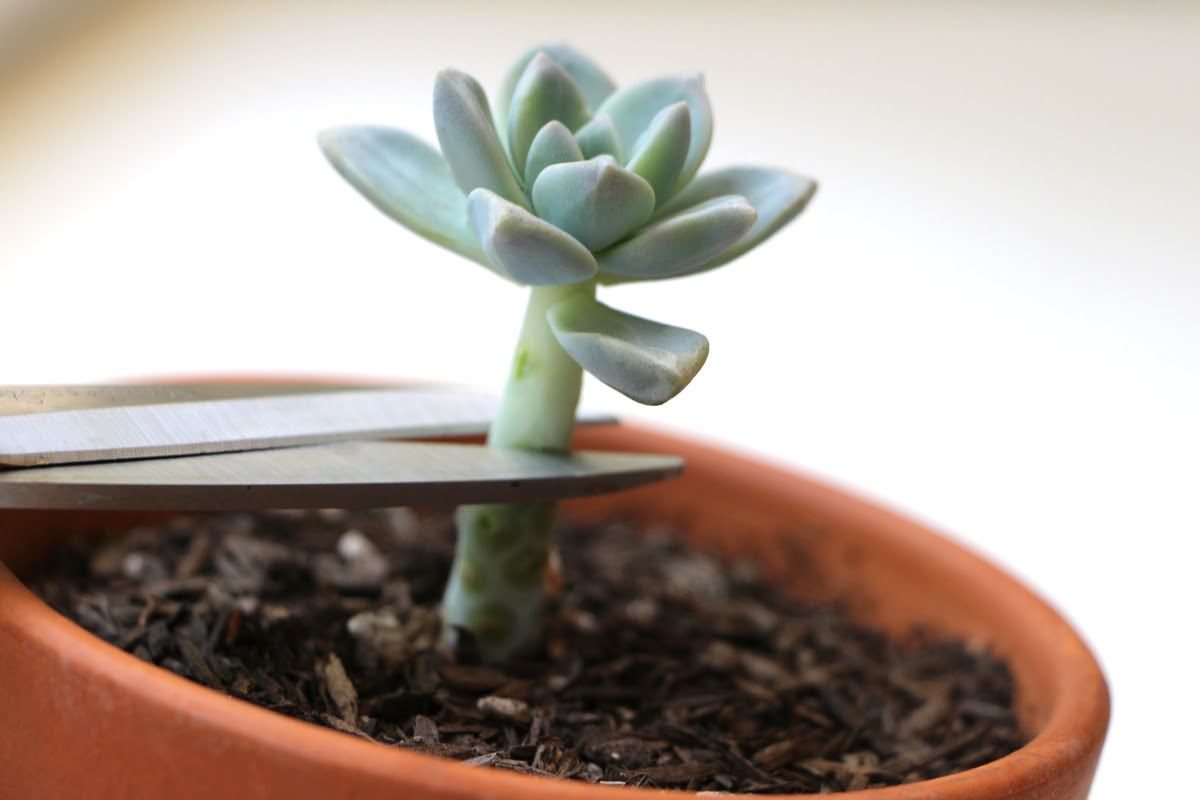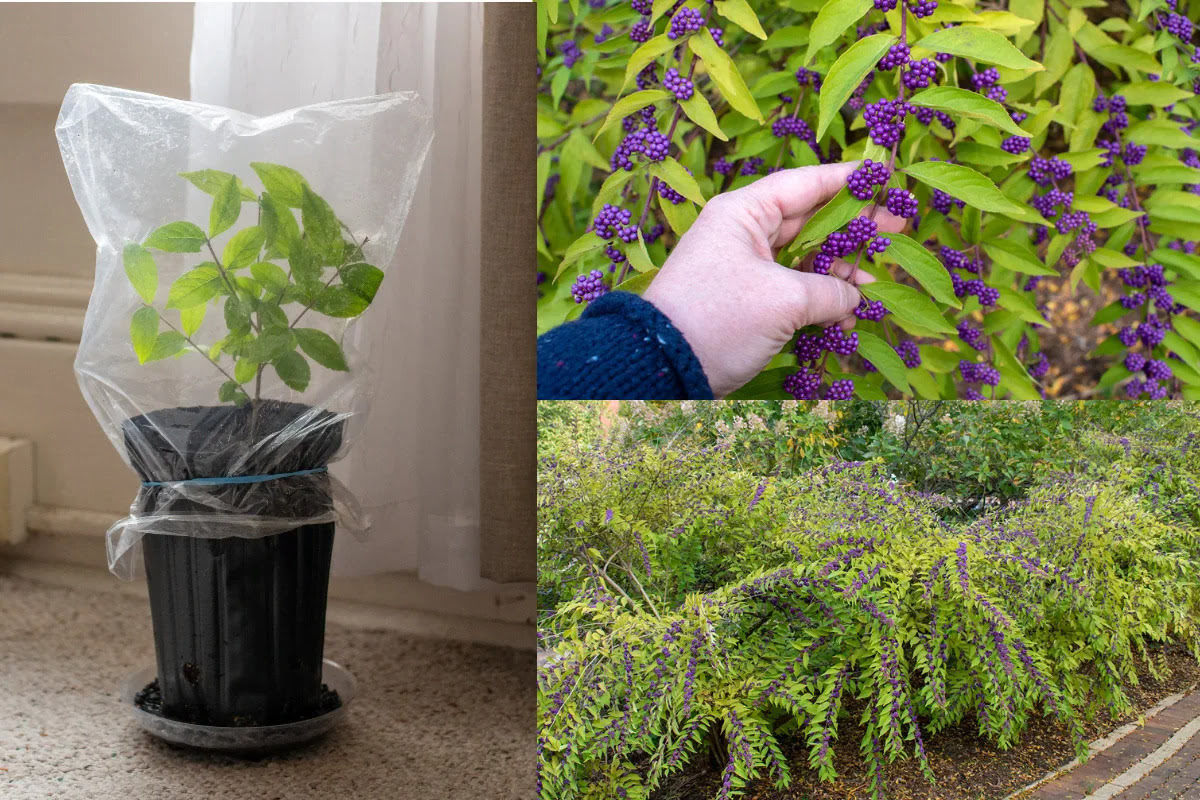Home>Gardening Tips and Tricks>Maximizing Yield>Where To Cut Fiddle Leaf Fig For Propagation


Maximizing Yield
Where To Cut Fiddle Leaf Fig For Propagation
Published: February 3, 2024
Learn the best techniques for maximizing yield when cutting a fiddle leaf fig for propagation. Find out where to make the cut for successful propagation.
(Many of the links in this article redirect to a specific reviewed product. Your purchase of these products through affiliate links helps to generate commission for Chicagolandgardening.com, at no extra cost. Learn more)
Table of Contents
Introduction
Are you looking to expand your fiddle leaf fig collection or share the beauty of these stunning plants with friends and family? Propagating a fiddle leaf fig can be a rewarding and exciting endeavor, allowing you to create new plants from your existing one. Whether you're a seasoned plant enthusiast or a beginner with a green thumb, understanding the art of fiddle leaf fig propagation is a valuable skill that can bring joy and satisfaction.
In this comprehensive guide, we will delve into the intricate process of fiddle leaf fig propagation, exploring the best practices and techniques for successfully propagating these beloved plants. From identifying the ideal spot to make the cut to providing essential aftercare for the propagated fiddle leaf fig, we will walk you through each step with clarity and precision.
By the end of this article, you will feel confident and empowered to embark on your fiddle leaf fig propagation journey, equipped with the knowledge and expertise needed to nurture healthy and thriving new plants. So, grab your gardening tools and get ready to unlock the secrets of fiddle leaf fig propagation!
Understanding Fiddle Leaf Fig Propagation
Before you roll up your sleeves and start propagating your fiddle leaf fig, it’s essential to grasp the fundamentals of this process. Propagation is the method of creating new plants from a parent plant, and fiddle leaf figs can be propagated through various techniques, including stem cuttings and air layering. Stem cuttings, the most common method, involve taking a section of the stem and encouraging it to develop roots, ultimately giving rise to a new plant.
Fiddle leaf figs, scientifically known as Ficus lyrata, are revered for their large, glossy leaves and striking appearance. Propagation presents an opportunity to share the beauty of these plants with others while expanding your own collection. Additionally, propagating fiddle leaf figs can serve as a form of plant rejuvenation, allowing you to refresh the growth and vitality of your existing plant.
Understanding the unique growth patterns and preferences of fiddle leaf figs is crucial for successful propagation. These plants thrive in bright, indirect light and require well-draining soil to prevent waterlogging, making them well-suited for indoor environments. By comprehending the specific needs of fiddle leaf figs, you can tailor your propagation approach to provide the optimal conditions for new growth.
As we delve deeper into the art of fiddle leaf fig propagation, you’ll gain insights into the best practices for identifying the ideal spot to make the cut, executing the cutting process with precision, and nurturing the propagated fiddle leaf fig to ensure its healthy development. With a solid understanding of fiddle leaf fig propagation, you’ll be well-prepared to embark on this fulfilling journey and witness the magic of new growth unfold before your eyes.
Identifying the Best Spot to Cut
When it comes to propagating a fiddle leaf fig, selecting the optimal spot to make the cut is a critical decision that can significantly impact the success of the propagation process. The ideal cutting spot is typically found on the stem of the plant, where new roots can readily emerge and support the growth of a new fiddle leaf fig. Here are some key considerations to keep in mind when identifying the best spot to make the cut:
- Choose a Healthy Stem Segment: Look for a section of the stem that is healthy, robust, and free from any signs of disease or damage. A healthy stem segment will provide the necessary nutrients and support for the development of new roots, setting the stage for successful propagation.
- Opt for a Node-Containing Area: Nodes, which are the small, protruding bumps on the stem, play a pivotal role in root development. Select a spot that contains at least one or two nodes, as these are the sites from which roots will emerge. Nodes serve as natural growth points and are essential for initiating the formation of roots.
- Consider the Length of the Cutting: Aim to make a cutting that is approximately 6-12 inches in length, as this provides an adequate portion of the stem for rooting while ensuring that there are ample leaves to support photosynthesis. A longer cutting allows for more nodes and leaves, increasing the likelihood of successful root development.
- Assess the Leaf Distribution: Take note of the leaf distribution along the stem and ensure that the cutting includes several leaves. Leaves are vital for the production of energy through photosynthesis, fueling the growth of the new plant. Including multiple leaves in the cutting enhances its capacity to generate energy and sustain root development.
By carefully evaluating these factors and identifying a suitable spot to make the cut, you can set the stage for a successful and thriving propagation process. The chosen cutting spot plays a pivotal role in determining the initial growth trajectory of the propagated fiddle leaf fig, making it essential to exercise precision and care in this crucial step.
Step-by-Step Guide to Cutting the Fiddle Leaf Fig
Embarking on the process of cutting a fiddle leaf fig for propagation requires a methodical approach and attention to detail. By following a step-by-step guide, you can execute the cutting process with precision, setting the stage for the successful development of new roots and the emergence of a thriving new plant. Here’s a comprehensive outline to help you navigate the cutting process:
- Gather the Necessary Tools: Before initiating the cutting process, gather the essential tools, including sharp, sterilized pruning shears or a knife, a clean container filled with water or a suitable rooting hormone, and a well-draining potting mix for planting the cutting.
- Select the Cutting Spot: Identify the best spot on the fiddle leaf fig’s stem, considering factors such as stem health, presence of nodes, and leaf distribution. Once you’ve chosen the optimal cutting spot, carefully position the pruning shears or knife and make a clean, diagonal cut to sever the stem.
- Remove Excess Leaves: Trim the lower leaves from the cutting, leaving a few leaves at the top to facilitate photosynthesis. This step helps to direct the plant’s energy towards root development and reduces the moisture loss through transpiration.
- Apply Rooting Hormone (Optional): If desired, dip the cut end of the stem in a rooting hormone to encourage the initiation of root growth. Rooting hormones contain compounds that stimulate root development, increasing the likelihood of successful propagation.
- Place the Cutting in Water or Soil: Submerge the cut end of the stem in a container of water or plant it directly into a pot filled with well-draining soil. If using water, change it regularly to prevent stagnation and maintain a conducive environment for root development.
- Provide Optimal Conditions: Place the cutting in a warm, bright location with indirect sunlight, ensuring that it receives adequate moisture and humidity. Monitor the cutting closely and make adjustments as needed to create an environment conducive to root formation.
Following these steps will equip you with the knowledge and guidance needed to execute the cutting process effectively, laying the groundwork for the successful propagation of your fiddle leaf fig. By approaching each step with care and precision, you can foster the growth of new roots and witness the transformation of the cutting into a flourishing new plant.
Aftercare for Propagated Fiddle Leaf Fig
Once you’ve successfully executed the cutting process and initiated the propagation of your fiddle leaf fig, providing proper aftercare is essential to ensure the continued health and growth of the newly propagated plant. By implementing the following aftercare practices, you can nurture the propagated fiddle leaf fig and support its transition into a robust and thriving member of your plant collection:
- Monitor Root Development: Keep a close eye on the cutting to observe the emergence and growth of new roots. This can be done by periodically checking the water container or gently tugging on the stem to assess the resistance, indicating the presence of developing roots.
- Transition to Soil: Once the cutting has developed a healthy network of roots, carefully transplant it into a well-draining potting mix. Choose a container with adequate drainage and provide the propagated fiddle leaf fig with a stable environment for continued growth.
- Gradual Sun Exposure: Introduce the propagated fiddle leaf fig to gradually increasing sunlight to acclimate it to brighter conditions. Start with indirect light and gradually expose the plant to more sunlight over time, allowing it to adjust and thrive in its new environment.
- Maintain Adequate Moisture: Ensure that the soil remains consistently moist but not waterlogged, striking a balance to support healthy growth. Monitor the moisture levels closely, adjusting your watering routine as needed based on the plant’s response and environmental conditions.
- Provide Nutrient Support: Consider incorporating a balanced, diluted fertilizer into your care routine to provide essential nutrients for the propagated fiddle leaf fig’s growth. Select a fertilizer specifically formulated for indoor plants and administer it according to the product’s instructions.
- Pruning and Maintenance: As the propagated fiddle leaf fig continues to grow, monitor its development and consider light pruning to shape the plant and encourage bushier growth. Remove any yellowing or damaged leaves to promote overall plant health.
By attentively tending to the aftercare needs of the propagated fiddle leaf fig, you can foster its transition from a cutting to a flourishing plant, adding vibrancy and greenery to your indoor space. With patience and dedication, you’ll witness the rewarding transformation of the cutting into a thriving fiddle leaf fig, ready to bring joy and beauty to its surroundings.
Conclusion
Congratulations on embarking on the enriching journey of fiddle leaf fig propagation! By delving into the art of propagation, you’ve unlocked the potential to create new life from an existing plant, fostering growth and rejuvenation in your indoor green oasis. Understanding the intricacies of fiddle leaf fig propagation, from identifying the optimal cutting spot to providing essential aftercare, empowers you to nurture healthy and thriving new plants with confidence and expertise.
As you venture into the world of fiddle leaf fig propagation, remember that patience and attentiveness are key virtues. Each step of the propagation process, from carefully selecting the cutting spot to monitoring root development and providing aftercare, contributes to the successful growth of the propagated fiddle leaf fig. Embrace the journey and relish the opportunity to witness the transformation of a humble cutting into a flourishing plant, brimming with vitality and beauty.
With the knowledge and insights gained from this guide, you are well-equipped to propagate fiddle leaf figs with precision and care, adding a touch of green splendor to your living space and sharing the joy of plant parenthood with others. Embrace the magic of propagation, and may your indoor garden bloom with the lush foliage of thriving fiddle leaf figs, cultivated through your dedication and nurturing touch.
So, roll up your sleeves, gather your gardening tools, and let the art of fiddle leaf fig propagation unfold before you. The journey awaits, filled with the promise of new growth, natural beauty, and the satisfaction of witnessing the fruits of your labor flourish in your home.


